By Patrick J. Chaisson
Staff Sergeant Chester B. Opdyke, Jr., crouched down at the tree line. He could see his objective, a crossroads village named Barrigada, shimmering in the hot August sun across a large open field just 300 yards away.
Inside Barrigada, Opdyke knew, was a deep well containing enough fresh water for thousands of thirsty GIs. But would the Japanese defend this tiny settlement and its all-important water hole? There was only one way to find out, so the 23-year-old squad leader motioned his lead scouts forward.
Those scouts, Pfc. John Andzelik and Private Salvatore Capobianco, kept alert for any sign of enemy activity as they stepped out into the clearing. The surrounding jungle remained eerily quiet. It was 0930 hours on Wednesday, August 2, 1944.
Just then, Andzelik spied three Japanese soldiers running across a trail up ahead. Taking cover, he and Capobianco signaled for their squad leader. Joining his scouts, Opdyke noticed a small shack off to the right that could serve as an observation post. He directed a section of infantrymen to clear it.
The soldiers advanced but a few yards when small-arms fire erupted from all sides. Andzelik was killed instantly while Capobianco went down with multiple wounds to his arm and leg. Sergeant Opdyke also took a bullet in the arm, and several members of his squad were shot as they rushed to cover.
In a matter of moments, the Japanese had pinned down 2nd Squad of 2nd Platoon, advance guard for Company I, 305th Infantry Regiment, 77th Infantry Division, U.S. Army. As medics went to work on the injured, company commander Captain Lee P. Cothran deployed his riflemen. In an attempt to find and flank the adversary, Cothran’s 1st Platoon rushed across an open draw. An unseen machine gun opened fire on them, killing three GIs. Snipers, seemingly everywhere, began picking off key leaders and heavy-weapons crews.
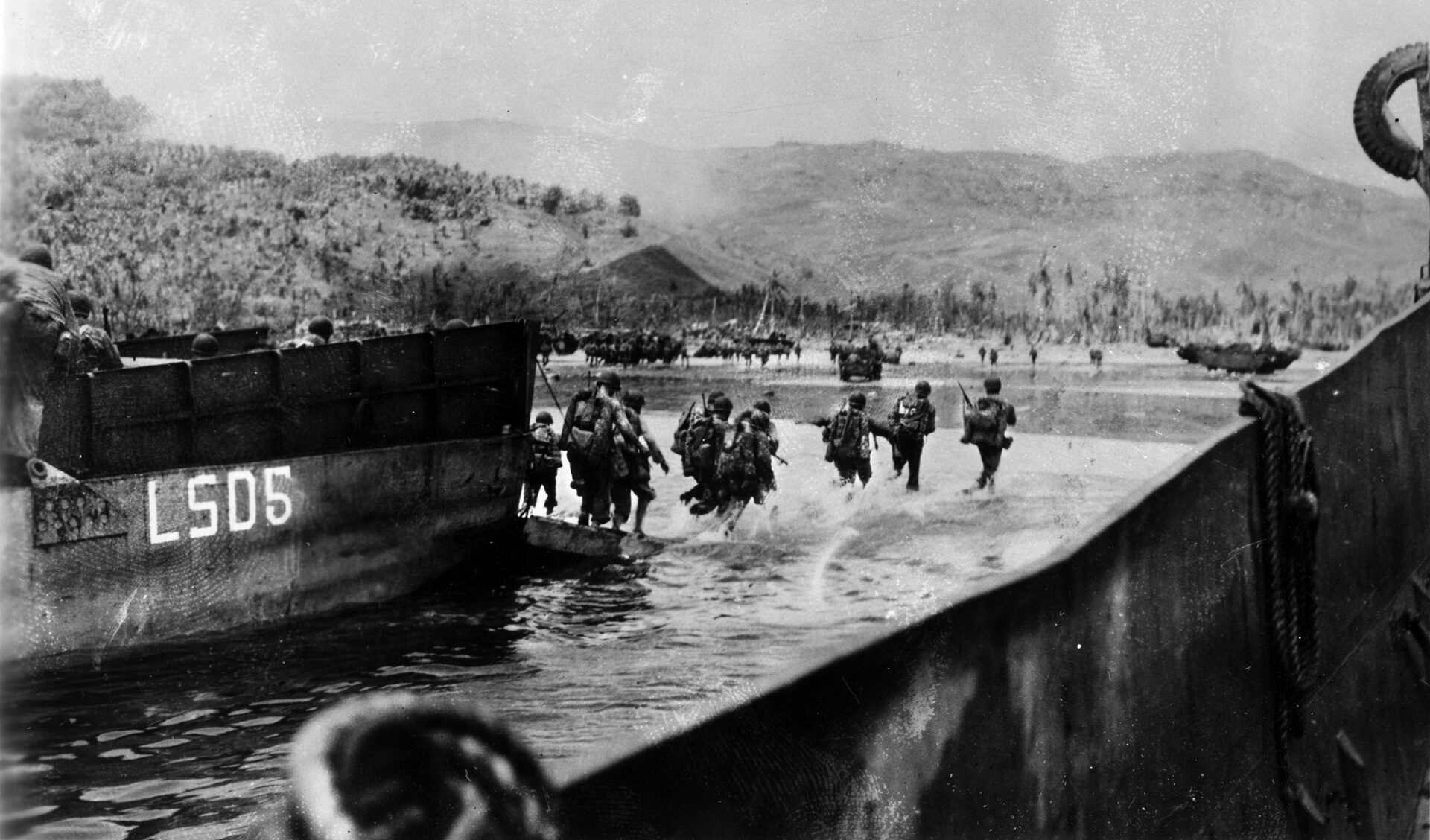
Item Company had been stopped cold. As his troops licked their wounds, Captain Cothran reported the morning’s action to higher headquarters. The foe held Barrigada with a strong force, he said, although no one knew for certain exactly how strong it was. Expert Japanese camouflage techniques, together with difficult terrain, made it impossible to accurately estimate enemy numbers.
The ambush tripped by Staff Sergeant Opdyke’s squad opened a fierce two-day fight for Barrigada and its 30,000-gallon reservoir of precious water. In this life-or-death struggle, desperate bands of disorganized Japanese infantrymen pitted themselves against inexperienced but well-equipped American combat soldiers. At stake was the fate of Guam, a strategic island in the Marianas archipelago of the Central Pacific. Located some 1,350 miles south of Tokyo and 3,300 miles west of Pearl Harbor, this U.S. possession had been under enemy occupation for nearly two and a half years. On December 10, 1941, Japanese invaders easily overwhelmed Guam’s small Marine garrison. In the summer of 1944, however, American troops had come to take it back.
Along with neighboring Saipan and Tinian, Guam was sought after by the U.S. Army Air Force as a base for its new long-range Boeing B-29 Superfortress bomber aircraft. Admiral Chester W. Nimitz, Commander-in-Chief Pacific Ocean Areas, also wanted to establish a fleet supply center there. And Guam’s location athwart Japan’s major sea lines of communication meant it could not by bypassed—American troops would have to go in and vanquish the island’s defenders rather than leaving those enemy soldiers to “wither on the vine.”
Guam, then, served as an essential steppingstone on Nimitz’ island-hopping campaign across the Central Pacific. The Japanese knew this, of course, and by late 1943 had initiated an emergency program to fortify their holdings in the Marianas. Time was against them, though. Powerful Allied forces were invading and occupying key island groups faster than Japan’s Imperial High Command could bring in men, machines, and munitions to stop them.
No one felt this sense of urgency more than Lt. Gen. Takeshi Takashina, commander of the Japanese Army’s 29th Division and the officer responsible for Guam’s defense. Takashina and his men had already endured a harrowing sea journey from Manchuria to the Marianas during February and March of 1944; 2,350 of them drowned after an American submarine torpedoed their transport vessels. Those who survived immediately got to work constructing obstacles and fortifications.
General Takashina could count perhaps 18,500 soldiers as present for duty. His 29th Division only had one full infantry regiment, the 38th, on Guam, but the island’s garrison also included two formations known as the 48th Independent Mixed Brigade and the 10th Independent Mixed Regiment. Three battalions of 75mm pack artillery, plus three tank companies, provided mobile fire support.
Also stationed on Guam were 3,000 members of the 54th Keibitai (Naval Guard Force), serving alongside 1,800 Imperial Japanese Navy construction engineers, as well as another 2,000 aircraft mechanics and technicians. Few of these sailors, however, possessed individual weapons or the training required to effectively use them.
Arrayed against Takashina’s defenders was a seemingly overwhelming assemblage of American military might. The U.S. Fifth Fleet, totaling 800 warships, 900 planes, and 127,000 ground troops, converged on the Marianas in early June 1944. Commanding this vast expedition was the victor of Midway, Admiral Raymond A. Spruance.
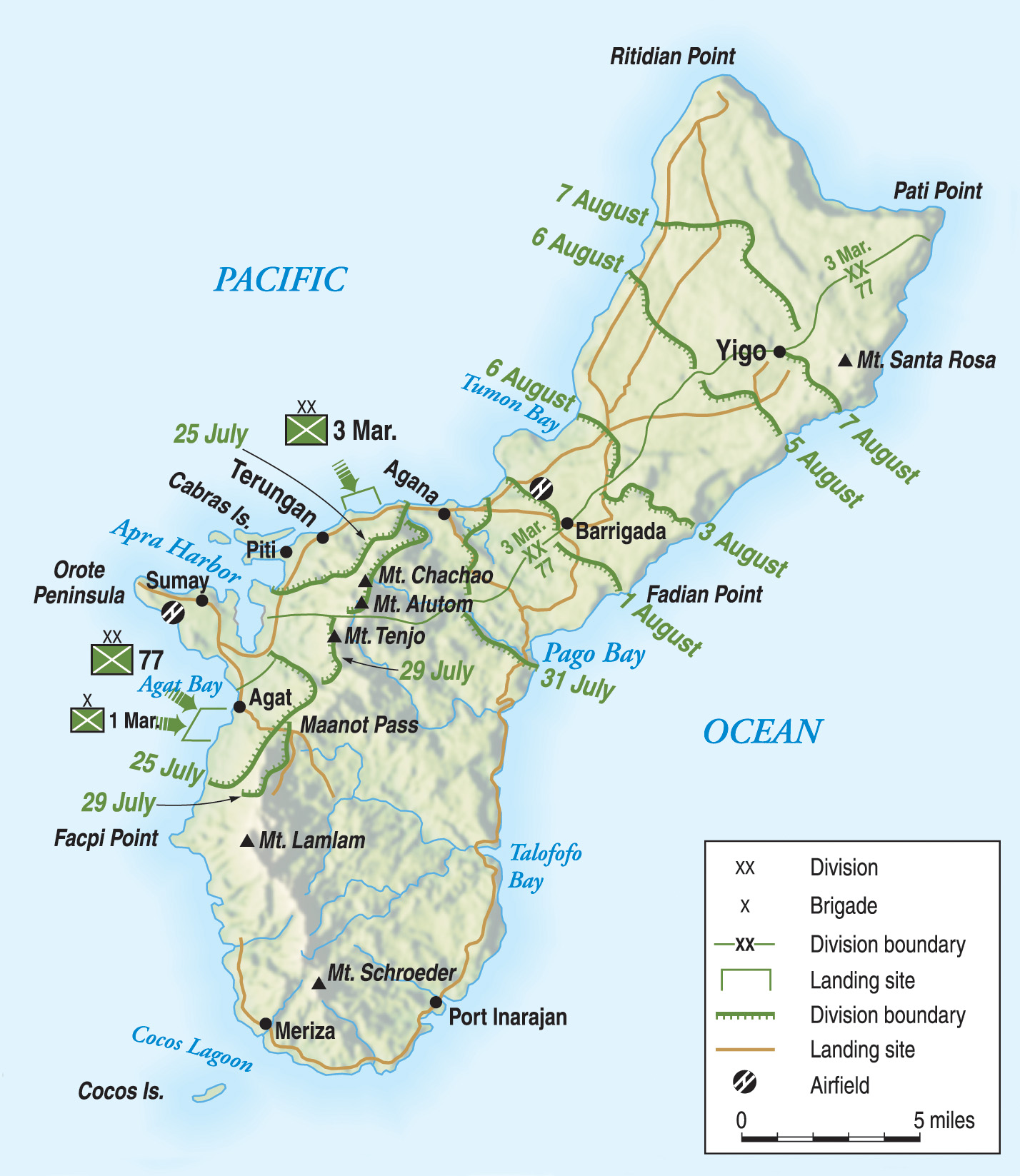
Spruance’s Fifth Fleet operated under an especially ambitious invasion plan. Upon arrival in the Marianas, his command would essentially split in half to form two amphibious assault groups. First, the Northern Attack Force (Task Force 52) was to invade Saipan and Tinian beginning on June 15. Three days later, the Southern Attack Force (Task Force 53) would land on Guam. Task Force 58, consisting of 12 fast aircraft carriers, eight battleships, and nearly 100 other surface vessels, positioned itself to protect the fleet against Japanese sea or air counterattack.
If all went according to plan, Operation Forager should take no more than 18 days from the moment U.S. Marines hit Saipan’s beaches to the end of combat operations on Guam.
All did not go as planned. To begin with, intelligence officers greatly underestimated both the number of Japanese occupying Saipan and their determination to hold onto that island. Saipan’s 29,000 defenders (the Americans thought there were 19,000) wreaked so much havoc on the Marines’ first waves that U.S. commanders had to commit their floating reserve mere hours into the operation.
That day, Spruance also learned that Japan’s 1st Mobile Fleet—consisting of nine flattops and 450 aircraft—had been spotted on its way out to fight a “single decisive battle” for control of the Marianas. While Task Force 58’s fast carriers raced off to meet this threat, the vulnerable transport convoys of Task Force 52 and Task Force 53 prudently withdrew out of range. Although the subsequent Battle of the Philippine Sea resulted in a resounding American victory, it meant the date for Guam’s invasion—designated W-Day to avoid confusion with D-Day on Saipan—needed to be postponed indefinitely.
This operational delay did give Spruance’s Southern Attack Force time to significantly increase the number of preinvasion air and naval-gunfire missions directed against targets on Guam. The original plan called for a two-day bombardment; in fact, U.S. warships and planes pounded Takashina’s defenses for 13 continuous days. It was the longest preparatory shelling of any amphibious landing site in the war so far.
Documents captured on Saipan confirmed that Guam was strongly defended, although the precise size of its garrison remained a mystery. The Southern Attack Force would require additional troops to ensure victory against this dangerous foe, yet all combat units on Saipan were fully committed to the fight there and on Tinian. A full division of reinforcements had to be identified, loaded aboard transport vessels, and moved rapidly to the Marianas.
The U.S. Army’s 77th Infantry Division, nicknamed “Statue of Liberty” for its blue and gold shoulder patch, appeared to meet these requirements. Stationed on Oahu since March 1944, the 77th’s soldiers had spent the previous two years undergoing an extensive program of desert and jungle training. Guam would be their introduction to battle. The division commander, Maj. Gen. Andrew D. Bruce, had served in World War I, and he prided himself on building an organization that was prepared to accomplish any task.
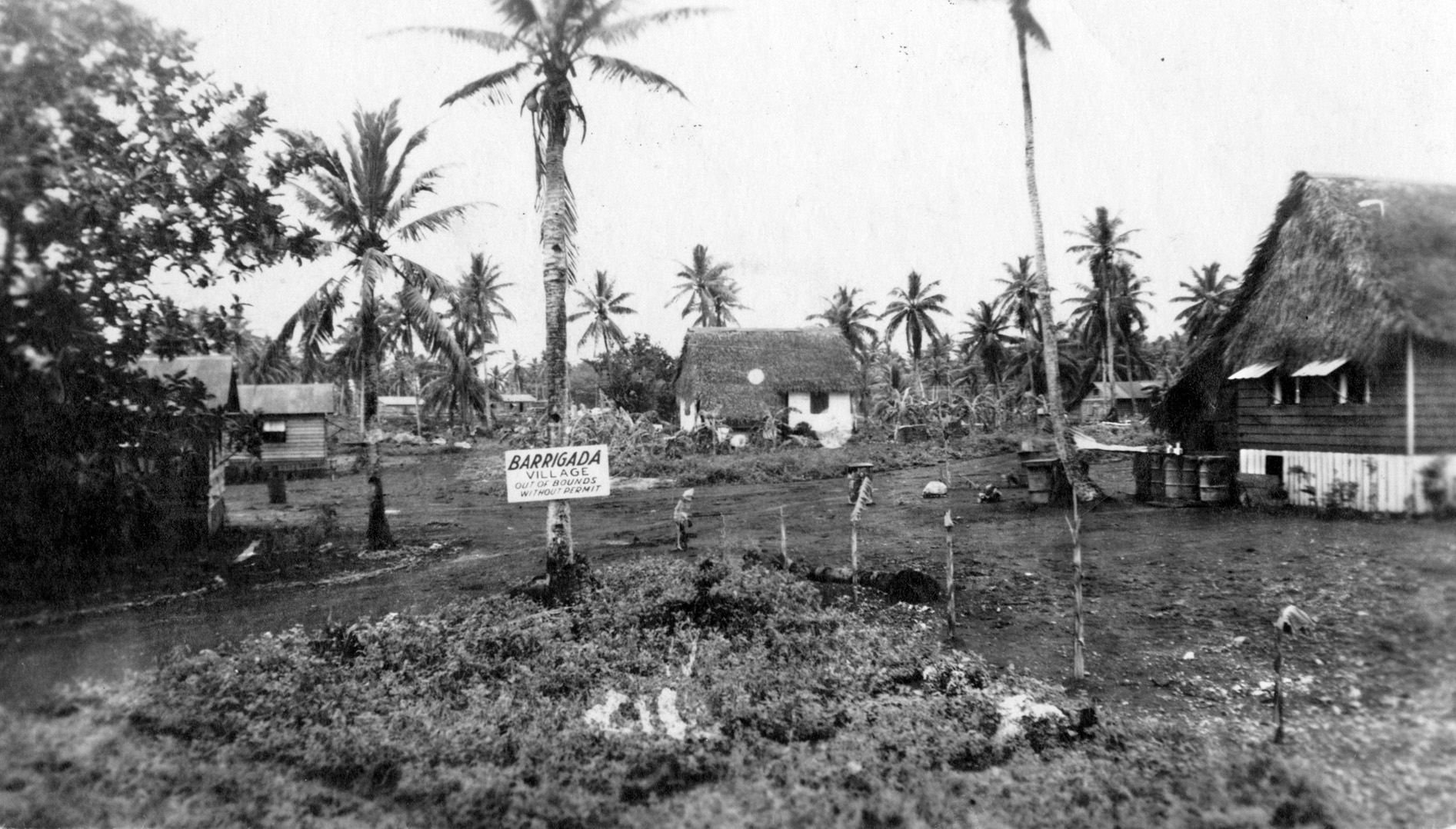
The men of Maj. Gen. Bruce’s division were about to test their training and readiness in the crucible of combat. On June 29, senior officers in charge of Forager set a new date for the invasion of Guam. W-Day would now take place on July 21, with the 77th Infantry Division assigned as Corps reserve.
This decision gave the Statue of Liberty Division’s soldiers less than two weeks to pack up their equipment, board attack transports for the 3,300-mile trip to Guam, and create a tactical plan. In the rush to load, some matériel such as tentage and kitchen gear was accidentally left behind. Meanwhile, the division’s planning staff scrambled to obtain updated information on enemy dispositions, friendly missions, and the island they were about to invade.
Largest and southernmost of the 15-island Marianas, Guam measured 32 miles in length and from 4 to 10 miles across. Its surface area totaled 225 square miles. Peanut-shaped, this landmass was divided almost equally between a mountainous southern region and a rugged limestone plateau to the north. It was also completely surrounded by a coral barrier reef.
Most of Guam’s 22,000 native residents, known as Chamorros, lived along its western shore. Recently, however, Allied intelligence learned the Japanese had been resettling thousands of civilians into concentration camps located well inland. Fiercely loyal to the United States, these people were unlikely to oppose an American invasion—but the sheer number of noncombatants inhabiting their battle zone presented frightening new challenges to the Marines and soldiers set to liberate the island.
All invasion troops fell under the command of Maj. Gen. Roy A. Geiger, United States Marine Corps. Geiger’s III Amphibious Corps, landing-force headquarters for the Guam operation, contained three main tactical units: the 3rd Marine Division, the 1st Marine Provisional Brigade, and the 77th Infantry Division. These formations, except for the Statue of Liberty Division, had all previously seen combat.
The Guam landings would put 29,000 Marines ashore starting at 0830 hours on W-Day, July 21, 1944. In the north, between Asan and Adelup Points, the 3rd Marine Division was to come across the beach and seize key high ground that dominated their route of advance southward. Seven miles distant, the 1st Provisional Brigade would land at Agat, secure its flanks, and wheel north. General Geiger wanted these two outfits to link up with one another by dusk on W-Day, thus cutting off a major Japanese position on the Orote Peninsula before his foe could launch a counterattack.
Similar to what happened at Saipan, ferocious resistance on the beachhead quickly frustrated Geiger’s scheme of maneuver. As casualties grew among the first waves of Marines, a call went out for more troops. Accordingly, GIs from the 305th Infantry Regiment, 77th Infantry Division, started boarding their landing craft and at 1300 hours headed in to reinforce the Provisional Brigade.
Over the next three days, the 77th’s remaining two infantry regiments (306th and 307th) came ashore along with its three 105mm and one 155mm howitzer battalions. Also joining the Statue of Liberty Division for the Guam landings was an independent tank battalion, the 706th. These army field-artillery and armored outfits lent their Marine Corps comrades much valuable fire support as the Leathernecks cleared Orote of over 1,300 fanatical defenders beginning July 24.
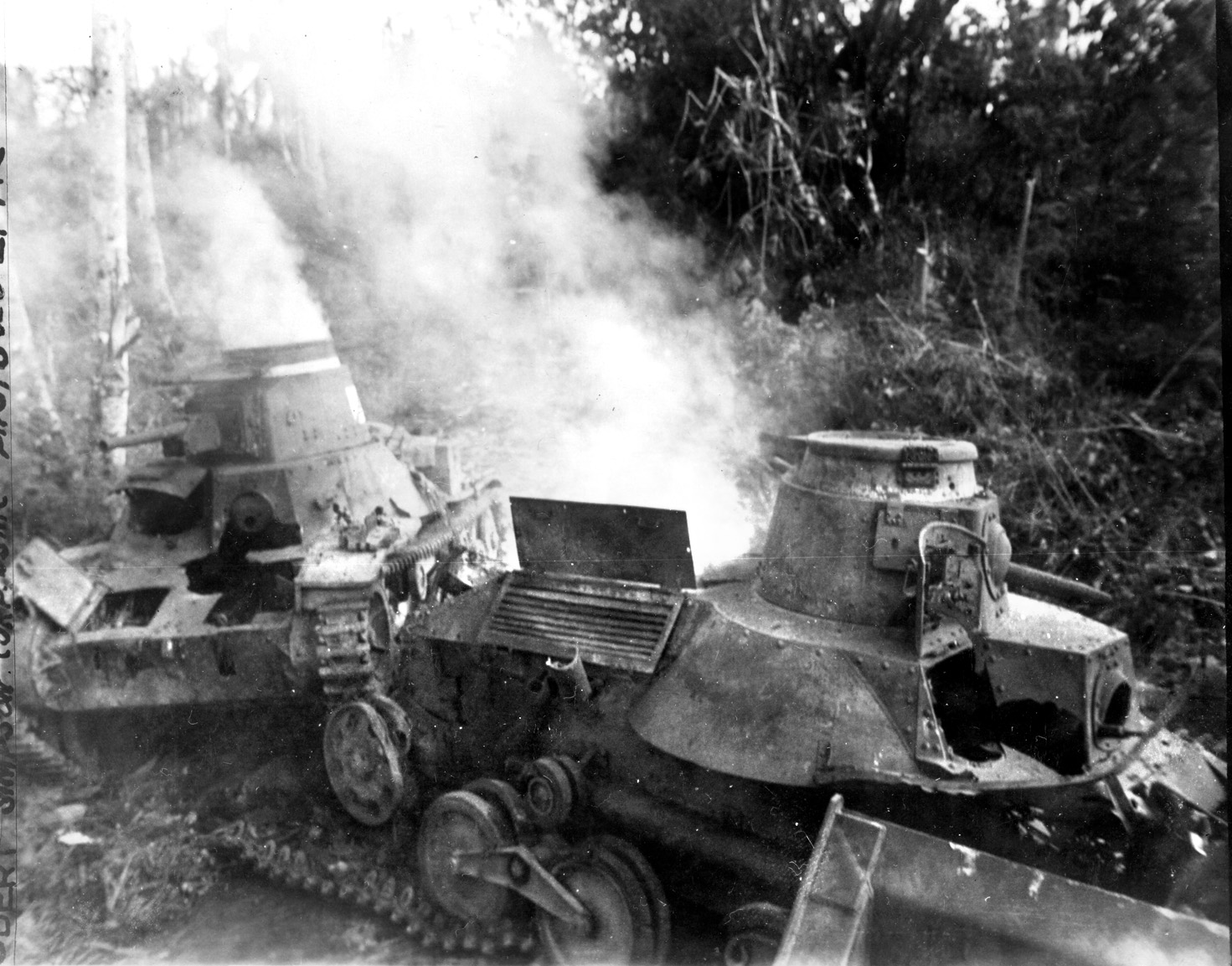
A full account of what happened during the invasion’s first 10 days is beyond the scope of this work. Yet great credit must be given to the Marines of 3rd Marine Division and 1st Provisional Brigade for their superior performance along Guam’s western coast. At a significant cost in lives, these brave men overran beach fortifications, defeated massive nighttime counterattacks, and killed thousands of Japanese soldiers—including Lt. Gen. Takashina, who perished on July 28.
On that date, Maj. Gen. Geiger’s command achieved a major campaign objective when it established a Force Beachhead Line (FBL). This control measure marked the limit of advance inland deemed necessary to prevent Japanese artillery from affecting unloading operations on the landing beaches. Starting on July 24, the Statue of Liberty Division occupied a continuous sector along the southern flank of III Amphibious Corps’ FBL. The GIs posted there dug in, conducted patrols, and began acclimating themselves to the realities of combat in this hot, dangerous place.
In addition, the 77th Cavalry Reconnaissance Troop—often led by Chamorro guides—conducted a number of four- and five-man patrols across Guam’s hilly southern half. These cavalrymen found little evidence of enemy activity, convincing Geiger that all remaining Japanese troops were fleeing toward the island’s northern region. He determined to pursue and annihilate them before they could reorganize into a cohesive defensive formation.
The III Amphibious Corps’ plan for the final phase of combat operations on Guam called for the 3rd Marine Division to form a line stretching east to west with its left flank touching the coast. Meanwhile, the 77th Infantry Division would move cross-country and extend that line all the way to the island’s eastern shore. Both divisions were then to move north, clearing out all resistance as they went. The 1st Provisional Brigade reverted to Corps reserve, while naval air and gunfire assets continued to support the attackers.
General Bruce’s soldiers began their 10-mile march toward Guam’s east coast at 0700 hours on July 31. Conditions were miserable. Near-constant rains turned all footpaths (there were no roads) into a muddy mess, while GIs struggled to negotiate steep hills, valleys, and gorges as they crossed the island’s central mountain range.
One infantryman vividly described this jungle ordeal: “The distance across the island is not far, as the crow flies, but unluckily we can’t fly. The nearest I came to flying was while descending the slippery side of a mountain in a sitting position…. After advancing a few yards you find that the [bolt] handle of the machine gun on your shoulder, your pack and shovel, canteens, knife, and machete all stick out at right angles and are as tenacious in their grip on the surrounding underbrush as a dozen grappling hooks…. The flies and mosquitos have discovered your route of march and have called up all the reinforcements including the underfed and undernourished who regard us as nothing but walking blood banks. We continue to push on.”
That afternoon, Co. L of the 307th Infantry Regiment liberated a native labor camp near Asinan where 2,000 Chamorros had been imprisoned. Other troops kept walking toward Guam’s eastern shore. By 1700 hours, the 3rd Battalion, 305th Infantry, had cleared a coastal settlement named Yona; significantly, the few dozen Japanese defending this village constituted the only organized resistance encountered by the 77th Infantry Division during its cross-island trek.
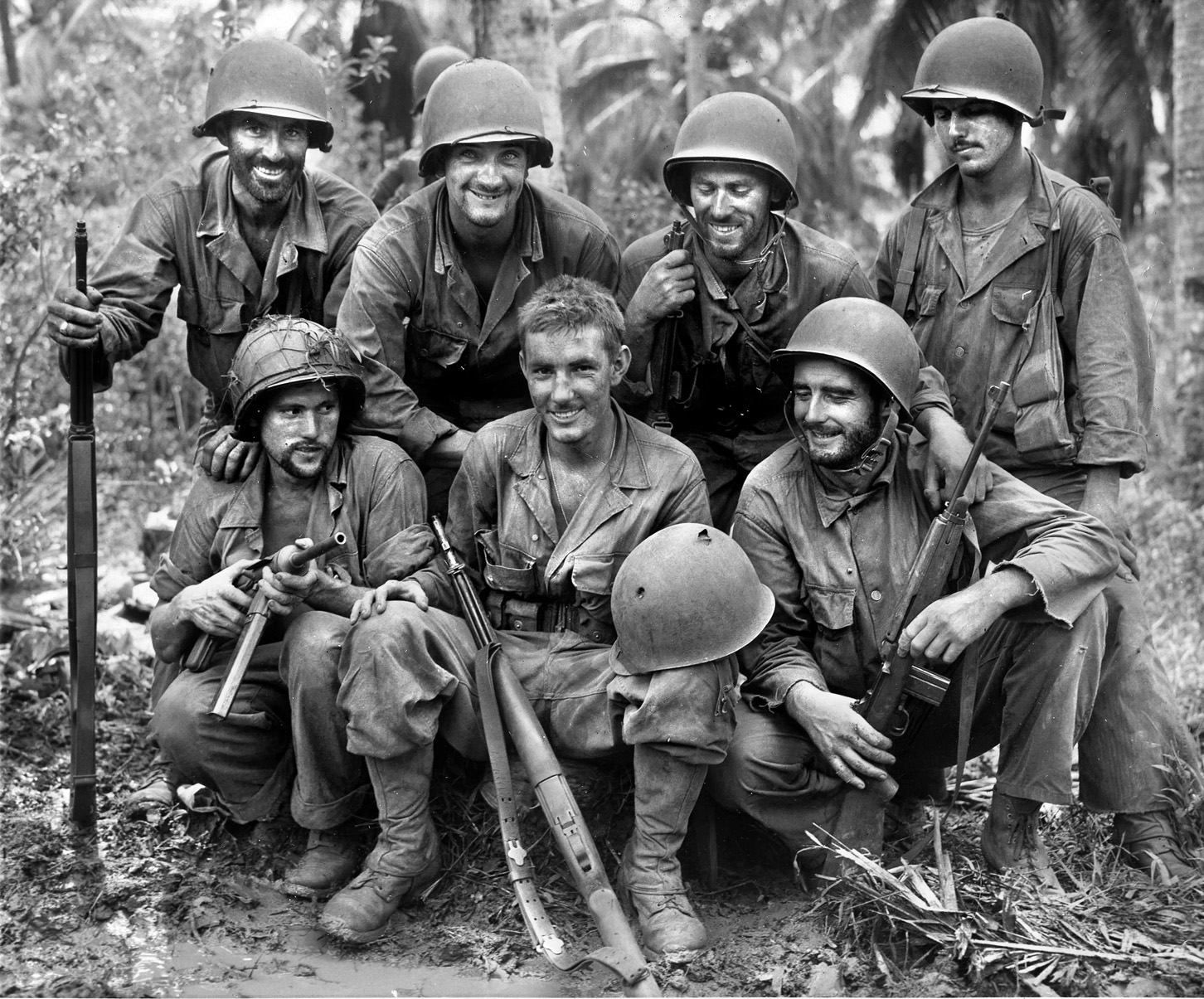
The Statue of Liberty Division’s rifle battalions had reached their attack positions one full day ahead of schedule. Yet supply trucks and jeeps were unable to follow these foot soldiers across Guam’s craggy mountain spine. Combat engineers attempted to cut a road out of the boondocks but stopped work after constructing just two miles of roadway. They simply did not possess the proper equipment for this project, one made worse by constant rains that turned the track into a bottomless quagmire.
Conditions improved when, on August 1, advancing infantrymen reached an important objective: the hard-surfaced Agana-Yona Road. Now, truck convoys could drive from supply dumps on the beach straight up to the front lines. There was one catch—both the 3rd Marine Division and the 77th Infantry Division had to share this narrow logistics artery.
Afterwards, General Bruce explained the problem: “We were faced with the … situation of supplying the division over a long, tortuous route which was also serving a Marine division, corps artillery, and later a Marine brigade as well. The books would say it can’t be done, but on Guam it was done—it had to be. We did it by using all available transportation and keeping it on the go day and night.”
August 2 dawned with the Statue of Liberty Division positioned along a north-facing line that spread two and a half miles across the eastern half of Guam. Riflemen from the 305th Infantry Regiment secured the right flank, anchored on the coast. On the left, GIs of the 307th prepared to advance while maintaining contact with the 3rd Marine Division. In reserve was the 306th Infantry Regiment. The day’s objectives included Mt. Barrigada, 640 feet tall, as well as Barrigada Village and its all-important water well.
Overnight, 14 M5A1 Stuart light tanks from Co. D, 706th Tank Battalion, reached the 77th’s forward positions. Beginning around 0630 hours, that outfit dashed into Barrigada on a mounted scouting mission. Drawing scattered small-arms fire, the tankers plastered all suspected enemy hideouts with their machine guns and 37mm cannon before returning to friendly lines.
At 0840 hours, Maj. Gen. Bruce ordered the tanks back into Barrigada to perform a more thorough reconnaissance. Captain Leonard H. Seegar, the company commander, once again took his armored chariots through the village before heading northwest toward Mt. Barrigada. Finding and destroying a hastily emplaced roadblock, Seegar’s tanks then turned around to finish their patrol.
After moving a few hundred yards along a jungle trail, one M5A1 got hung up on a stump. This event triggered a violent ambush; some Japanese opened fire with machine guns and 20mm cannon while others tried to climb on board the tanks carrying satchel charges and hand grenades. After the stuck tank worked its way free, Seegar’s crews shot their way out of the trap and beat a hasty retreat.
Meanwhile, riflemen belonging to the 305th and 307th Infantry Regiments started advancing toward Barrigada from the south. The 305th’s Co. I, including S/Sgt. Opdyke’s squad, found its path completely blocked by well-concealed Japanese soldiers. Additionally, thick vegetation in the 305th’s zone made command and control a nearly impossible task.
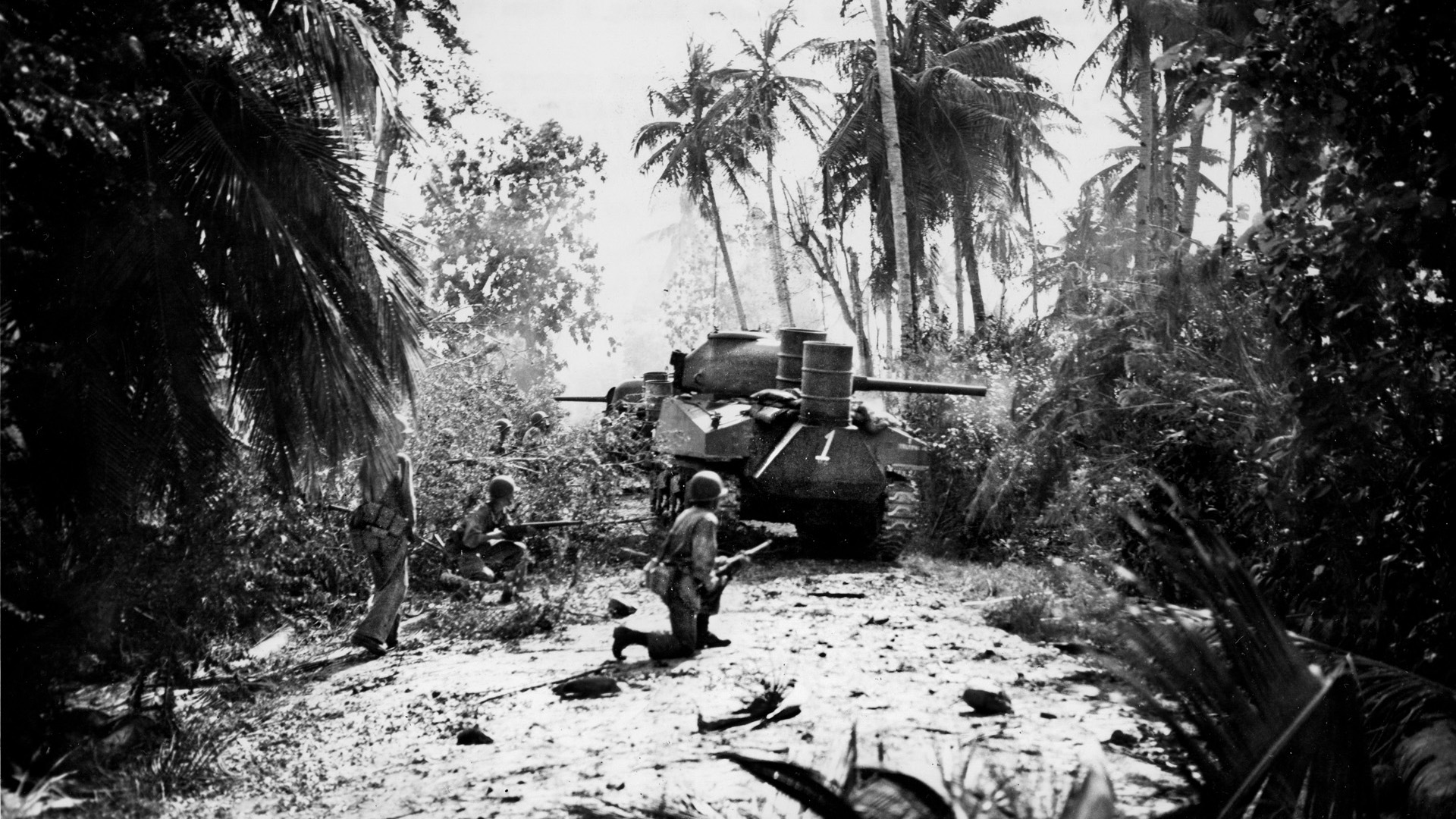
Any assault on Barrigada would have to be made by the 307th, yet this outfit was having problems of its own. On the left, fast-moving Marines rapidly outpaced the Army unit responsible for keeping in contact with them. To the right, 3rd Battalion managed to squeeze two companies into line as a base of fire. But 1st Battalion, attempting to outflank Barrigada’s defenders, got lost in a featureless labyrinth of tangantangan trees and “wait a minute” vines.
A 1,000-yard gap developed between Co. C on the left and the assault elements of Co. A. Enemy soldiers positioned in this area began to pour a devastating fire into “Able” Company’s GIs as they advanced. Company B, the battalion reserve, went forward to shore things up. In the lead was Lieutenant Willis J. Munger’s Second Platoon.
Rushing forward a few steps at a time, Munger and his outfit crossed the same large field that had held up Opdyke’s squad several hundred yards to the east. Their objective was a two-story structure known as the Green House for its distinctive color. Second Platoon made it to the Green House, but then encountered a terrifying new threat.
From a nearby grass shack that had been set alight by American tracer bullets, a Type 97 Chi-Ha medium tank unexpectedly emerged. As Munger’s men ran for cover, it raced through Barrigada spitting fire in all directions. Overrunning several crew-served weapons, the marauding Type 97 next turned toward U.S. lines. It shot up both an aid station and the 307th’s regimental command post before anyone could react, then escaped unscathed into the boonies.
Following this surprise armored incursion, Japanese forces started to regain the tactical initiative in Barrigada. Cut off and with casualties mounting, Lieutenant Munger’s besieged platoon received orders to withdraw from its position around the Green House. A flurry of mortar shells descended on the exposed GIs as they ran, killing Munger and several of his soldiers.
On the right, troops from the 305th Infantry Regiment once again tried to push forward. At 1330 hours, Co. K entered the battle alongside five M5A1 light tanks. Lying in wait for them was another Japanese tank, which quickly disabled one U.S. vehicle and killed three infantrymen. Trapped in the killing zone by expertly camouflaged adversaries, the men of “King” Company could only hug the ground and pray. Finally, four M4 Shermans from 3rd Platoon, Company C, 706th Tank Battalion bulled their way up to the ambush site. Their powerful 75mm cannon made short work of the enemy tank, but by that time the 305th’s advance halted due to darkness.
A second group of medium tanks aided the 307th Infantry’s late-afternoon attempt to rescue those injured soldiers who had been left behind in earlier fighting. A covering force of GIs from Company G dashed toward Barrigada from the west, advancing into town under scattered sniper fire. Meanwhile, unseen Japanese riflemen began targeting medics and stretcher bearers; only blasts of shotgun-like canister rounds from the Shermans’ 75mm main guns seemed to suppress these deadly sharpshooters.
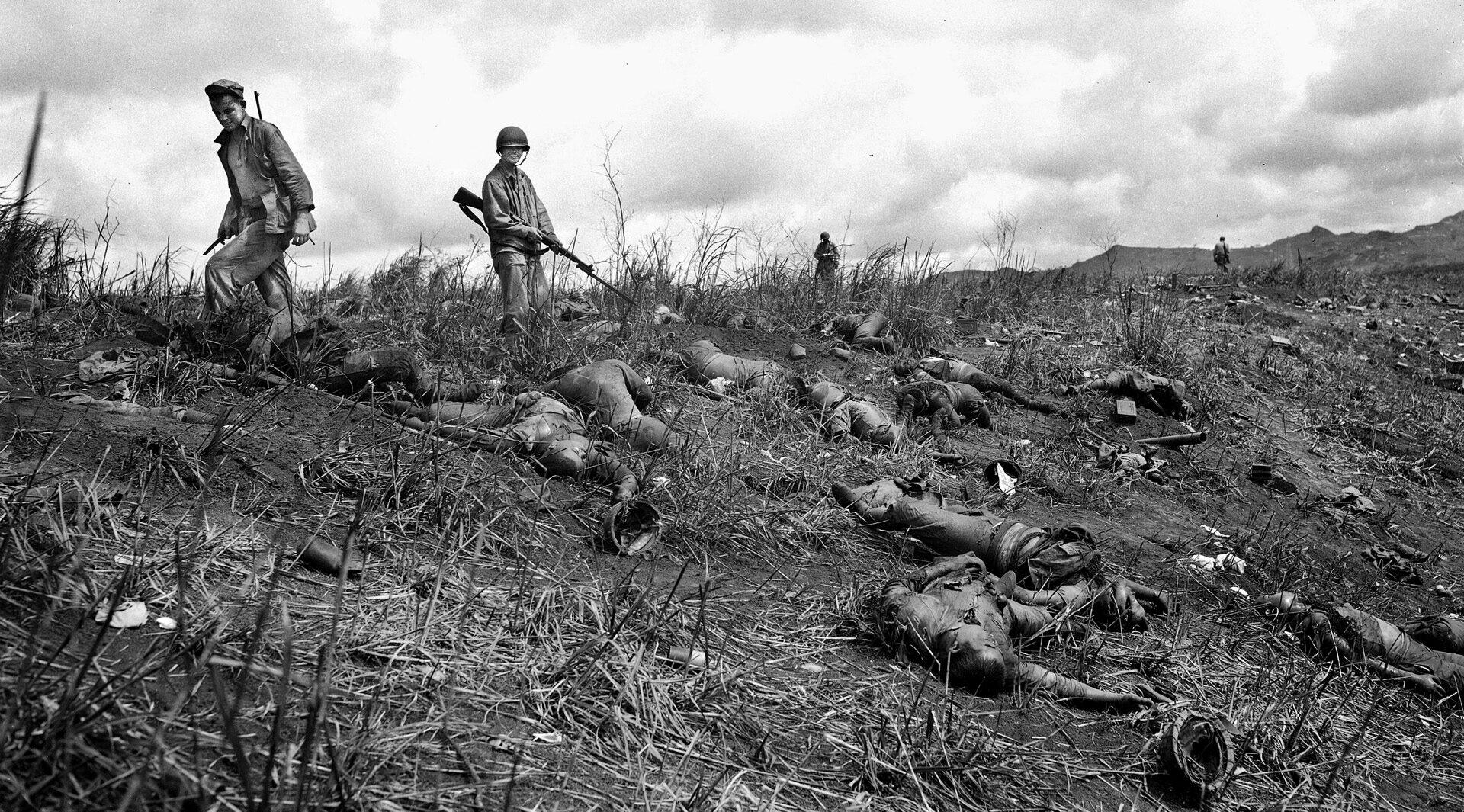
Finally, with all casualties evacuated, the M4s began to withdraw. The foe then turned his wrath on “George” Company’s security teams. First Platoon, under 1st Lt. James T. Whitney, absorbed the brunt of this onslaught. Caught out in an open field, Whitney’s men were cut down one by one by Japanese machine-gun fire pouring out of the forest on their left. When a relief column reached them at nightfall, only a few members of 1st Platoon remained unharmed. Later, it was learned the platoon sustained 26 casualties—most of them killed in action—that afternoon. Among the slain was Lieutenant Whitney.
The 77th Infantry Division had received a rude introduction to combat at Barrigada. In the 307th, 22 soldiers were killed and 63 wounded that day, while the 305th counted seven men dead and 35 injured. Worst of all, as dusk fell on August 2, the Statue of Liberty Division stood no closer to capturing this key village than it had at sunup.
Most of General Bruce’s problems stemmed from his soldiers’ inability to accurately navigate their way through Guam’s tangled boondocks. With infantry outfits unsure of their actual positions, the field artillery could not risk firing for fear of hitting friendly troops. Hopelessly lost, entire companies blundered straight into Japanese ambuscades. Other organizations lost contact with the units on their flanks and played no role in the day’s action. The entire battle was fought in an uncoordinated fashion that failed to utilize the 77th’s advantage in large-caliber firepower.
The Americans started redeeming themselves after dark on August 2, when warships off Guam’s east coast started clobbering all known and suspected Japanese positions around Barrigada. Toward dawn, division artillery joined in with sustained volleys of 105mm and 155mm gunfire. Just before the infantry assault kicked off at 0630 hours, a heavy mortar barrage pummeled the objective.
The capture of this small settlement proved anticlimactic, though, as the Japanese had pulled out overnight. Marching rapidly, U.S. foot soldiers easily took Mount Barrigada by midafternoon. Back at the well in town, as a unit historian recorded, the “Engineers arrived, jacked up a jeep for a power plant, improvised a belt from a Japanese fire hose, and started the precious water flowing.” For the rest of their time on Guam, the 77th’s GIs would have full canteens.
For the next two days impenetrable jungle terrain offered more resistance than did the Japanese. General Bruce’s troops moved forward in loosely coordinated company columns, using 32-ton Sherman tanks to laboriously break trails through dense vegetation. While pursuing American infantrymen experienced several sharp firefights with small bands of stay-behinds, intelligence officers predicted their foe’s main force—still 4,500 soldiers strong—was establishing one last line of defense tied into Mt. Santa Rosa and the hamlet of Yigo.
On August 5, the relatively fresh 306th Infantry Regiment passed through the 307th and established a solid connection with the 3rd Marine Division on its left flank. Now, III Amphibious Corps could once again move forward all across its zone. Overhead, carrier-based naval aircraft struck enemy-held road junctions and likely troop concentrations. The last phase of battle on Guam had begun.
General Geiger, anxious to conclude combat operations, committed the 1st Marine Provisional Brigade on August 6. He also instructed his subordinate commanders to keep only one rifle battalion in reserve; all other troops should press forward. Leaders in the Statue of Liberty Division made plans for an all-out assault on Yigo and Mt. Santa Rosa set to commence at noon on August 7.
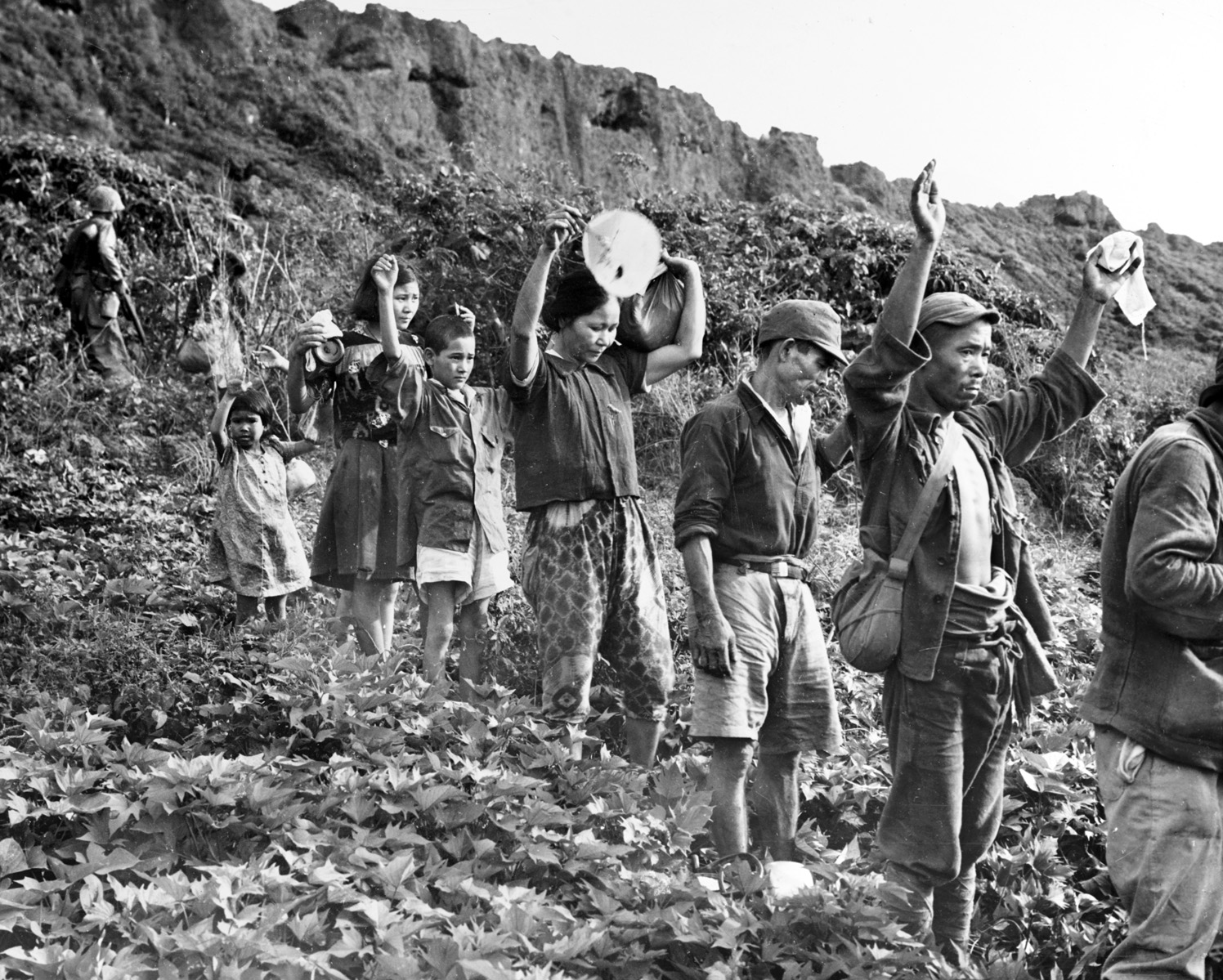
Prior to the attack, U.S. cannoneers showered their target with a steel rain of high explosives. Seven artillery battalions—over 100 guns—participated in this barrage, as did a naval-bombardment group cruising off Guam’s eastern shore. First, though, came waves of Seventh Air Force North American B-25 Mitchell gunships and Republic P-47 Thunderbolt fighter-bombers flying out of Saipan. After all these preparatory fires lifted, an immense cloud of smoke could be seen for miles around, spreading upward from Mt. Santa Rosa.
On the right, riflemen from the 305th Infantry Regiment moved forward along Guam’s jagged coastline. Miles to the left, their comrades in the 306th burst through solid vegetation to block the enemy’s routes of retreat. In the center, a task force of 307th Regiment foot soldiers and tankers belonging to the 706th Tank Battalion studied a large open space standing between them and Yigo. Were Japanese defenders hidden there, waiting for the Americans to timidly step into an ambush as they had at Barrigada?
Shortly after noon, the 307th’s Second Battalion and two tank companies came storming across the clearing in front of Yigo. Accompanied by squads of riflemen, a dozen M5A1s charged forward only to be stopped midfield by antitank fire coming from their left. Next, 10 M4 Shermans moved up to slug it out with the well-concealed Japanese. Two light and two medium tanks were disabled in this action, which also stalled 2nd Battalion’s infantry advance.
While this was going on, however, a rifle platoon from the flanking 3rd Battalion, 306th, maneuvered through heavy undergrowth to get behind the enemy’s ambush positions. With bayonets fixed, these fast-moving GIs rushed in to surprise their foe from the rear. Destroyed were dozens of Japanese soldiers, two Type 95 Ha-Go light tanks, one 47mm antitank gun, a pair of 20mm cannon, and eight machine guns—all without a single American casualty.
The Statue of Liberty Division had shown it could now move and fight in the jungle. At 1500 hours on August 8, the 307th reached Mt. Santa Rosa’s 830-foot summit after overcoming moderate opposition. The enemy’s last-ditch defenses never materialized; most of those Japanese fighting men who remained alive had long since disappeared into the undergrowth. American troops, later augmented by armed Chamorros, would spend months hunting down these fugitives.
Together with U.S. Marines from III Amphibious Corps, Maj. Gen. Bruce’s soldiers liberated Guam in a 21-day campaign fought during July and August of 1944. In this clash, their first taste of battle, the Statue of Liberty Division’s troops quickly learned the deadly business of ground combat. It cost them 265 G.I.s killed in action, two missing, and 876 men wounded seriously enough to require evacuation.
The 77th Infantry Division was fighting on Leyte in the Philippines when Boeing B-29 Superfortress bombers began operating from airfields across the Marianas during January of 1945. One of those bases, North Field, was in fact carved out of the Yigo-Mt. Santa Rosa battlefield on Guam. Today, North Field continues to operate as Andersen AFB, a key forward logistics-support center for U.S. Air Force strategic bombers in the Pacific.
Frequent contributor Patrick J. Chaisson writes for WWII History on a variety of topics from his home in Scotia, New York.
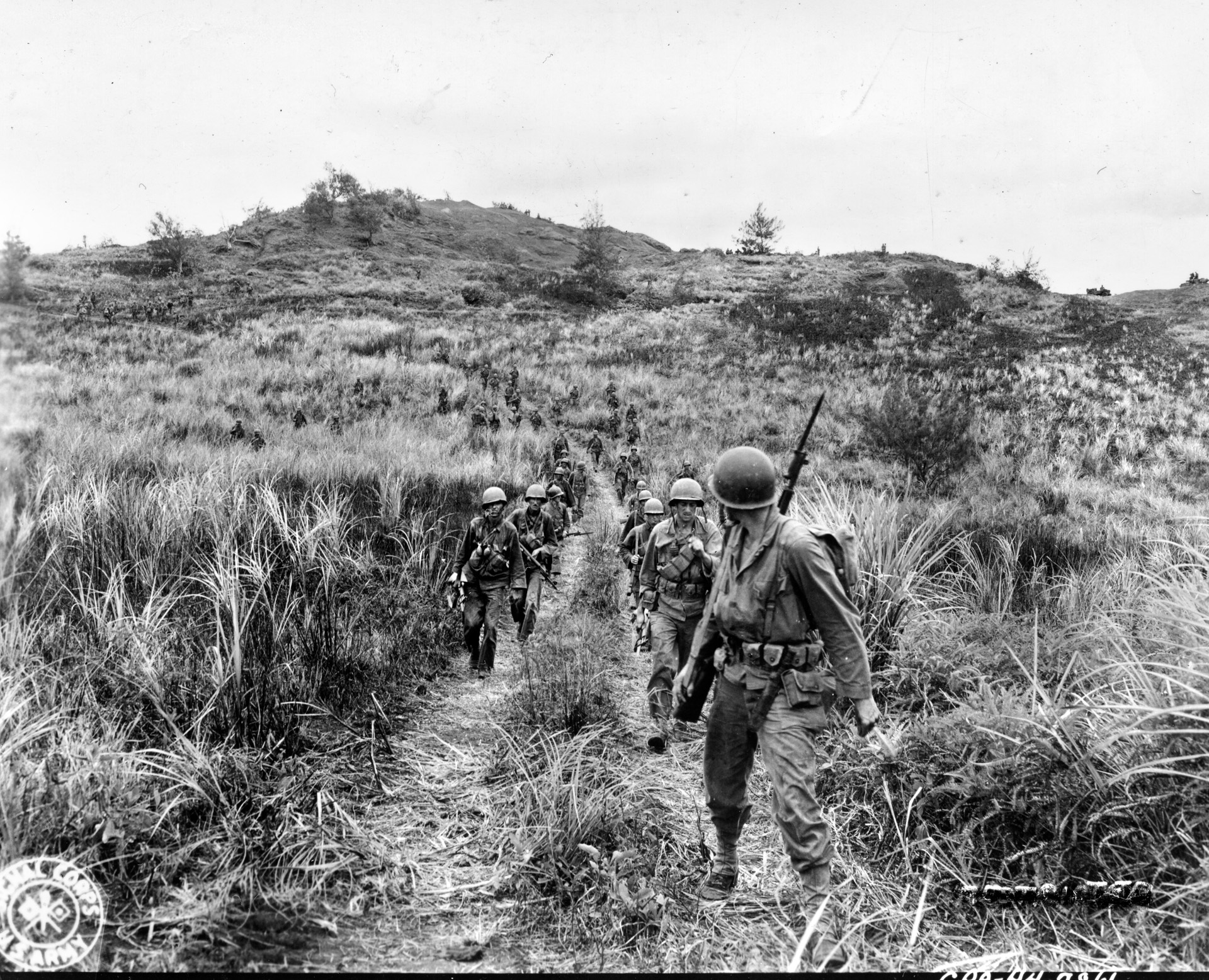
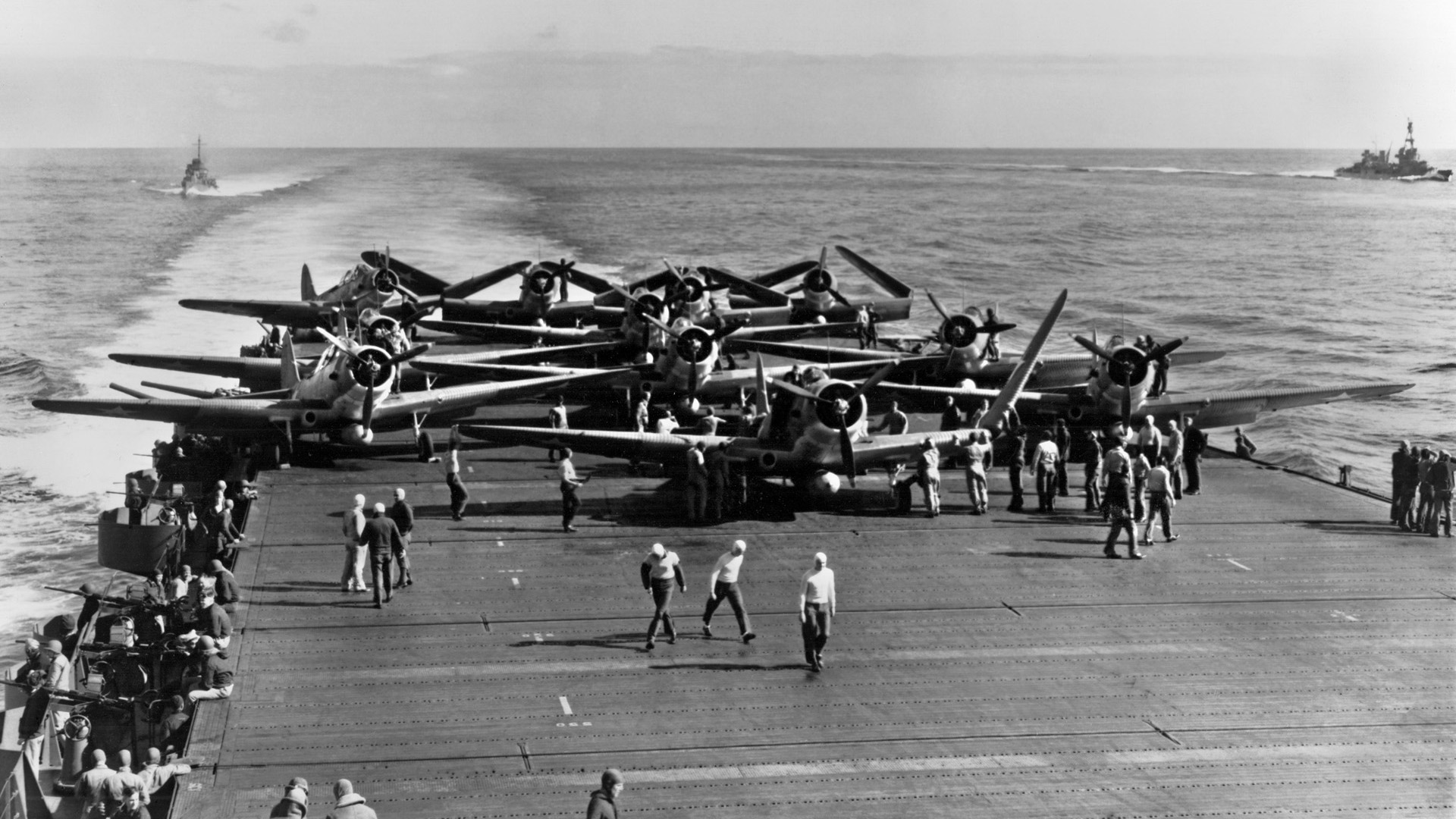
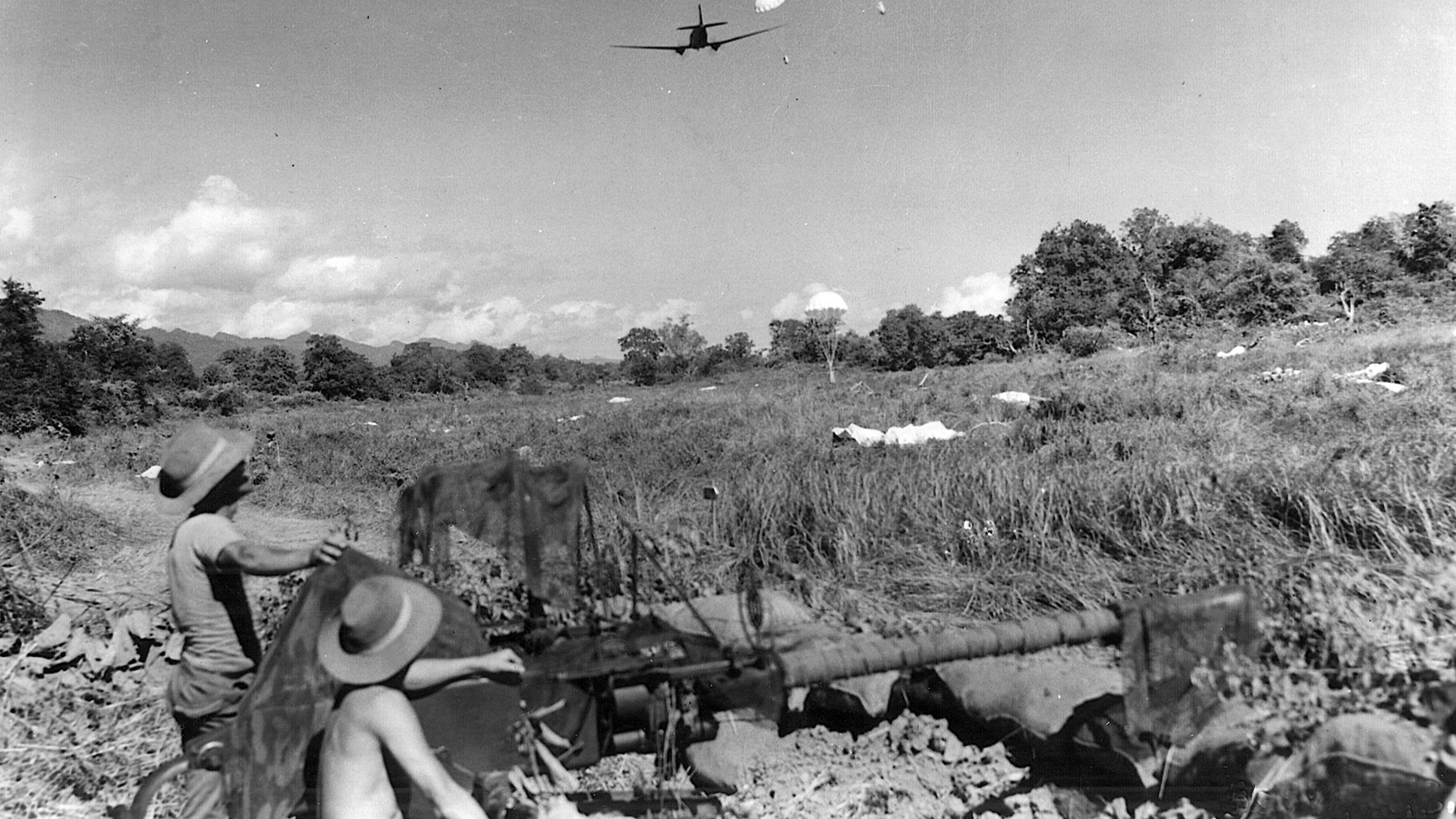
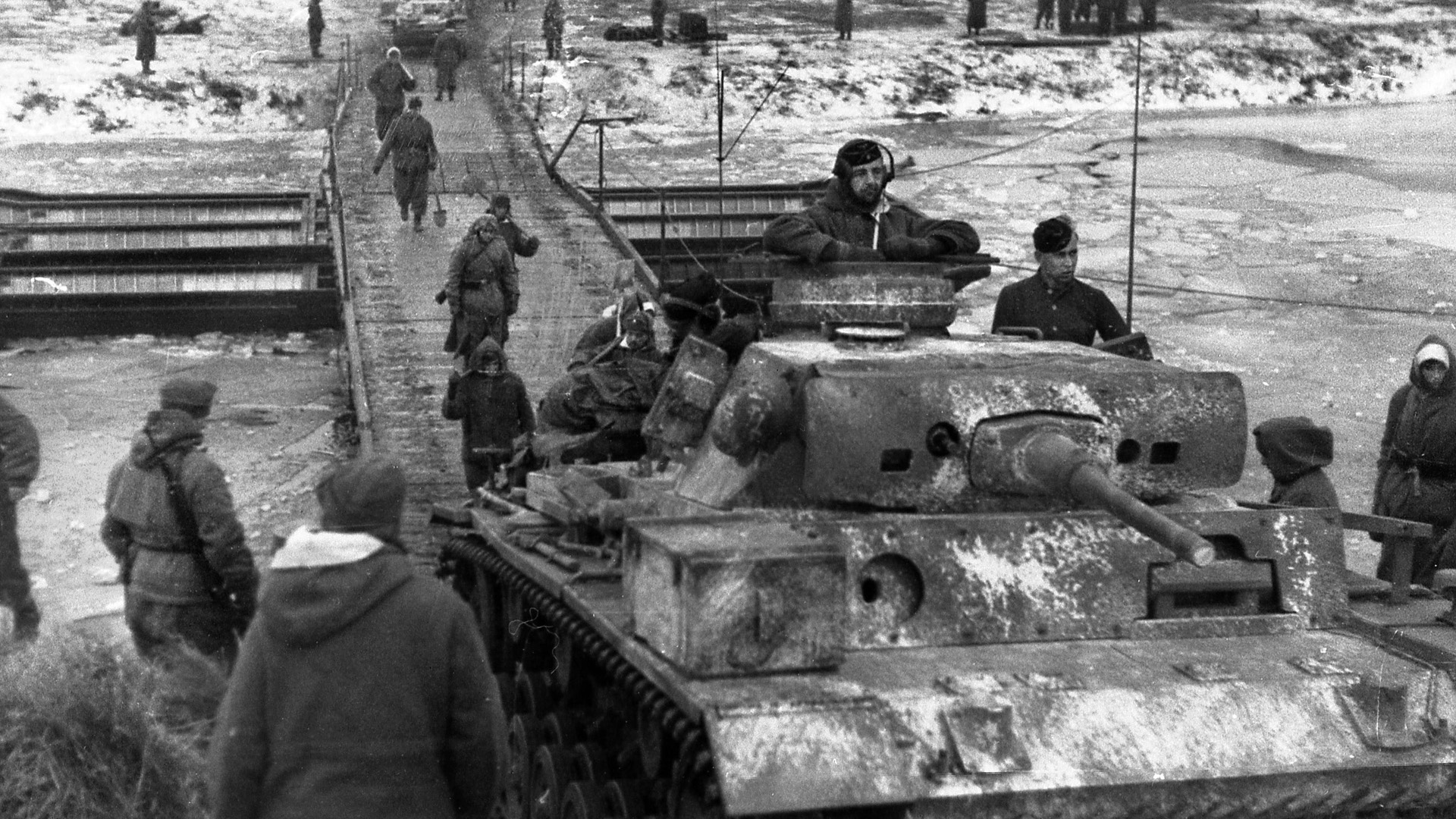
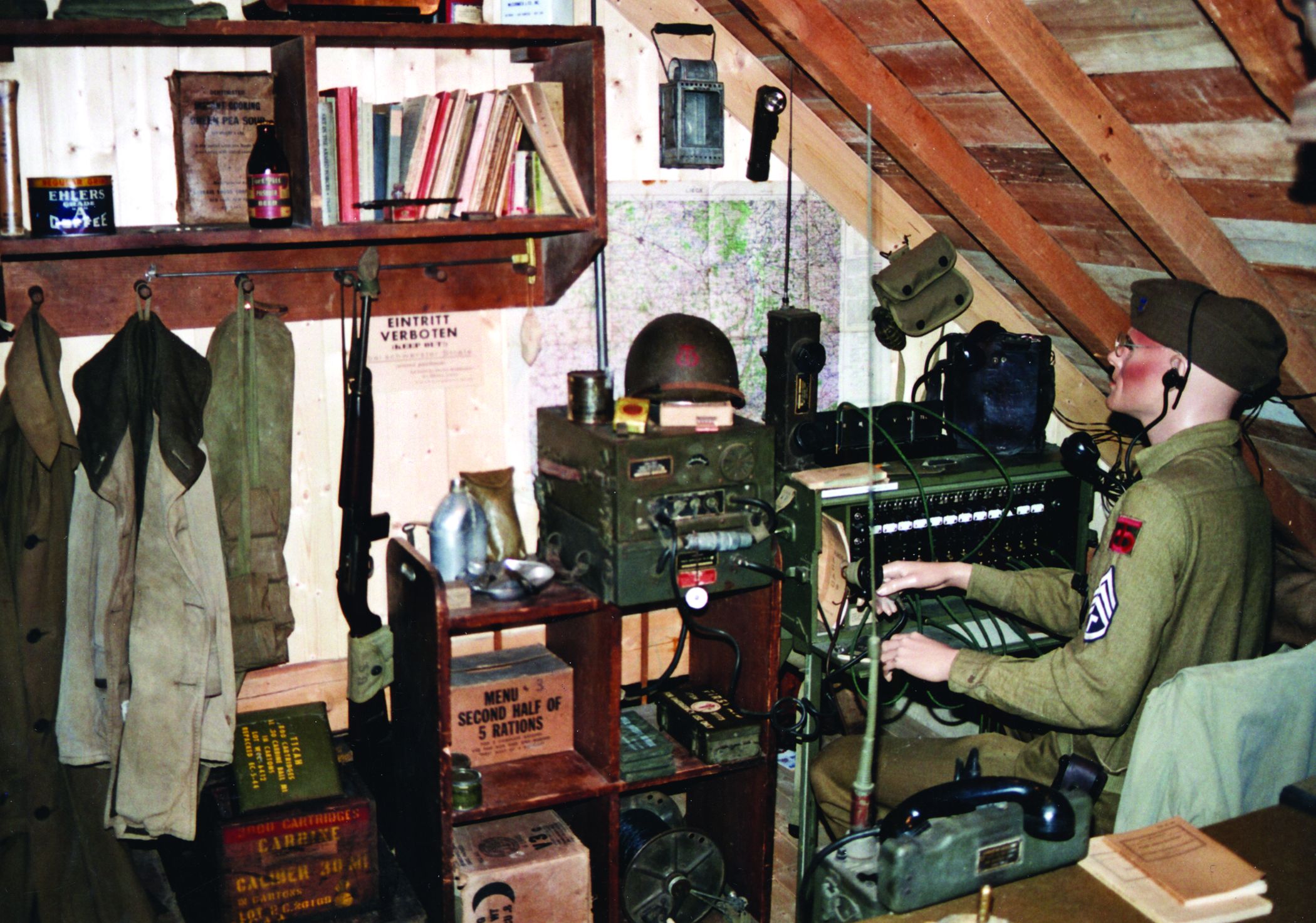
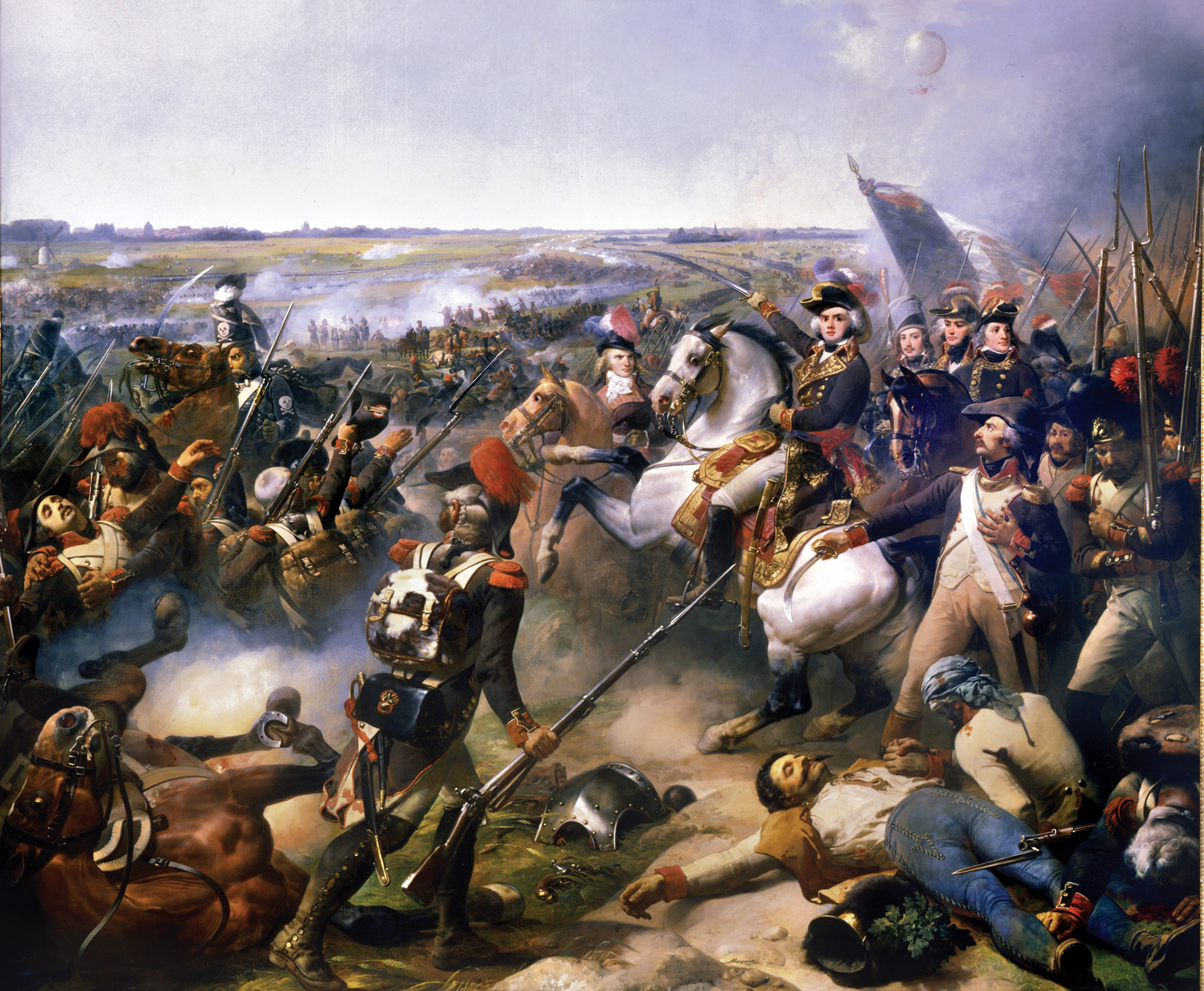
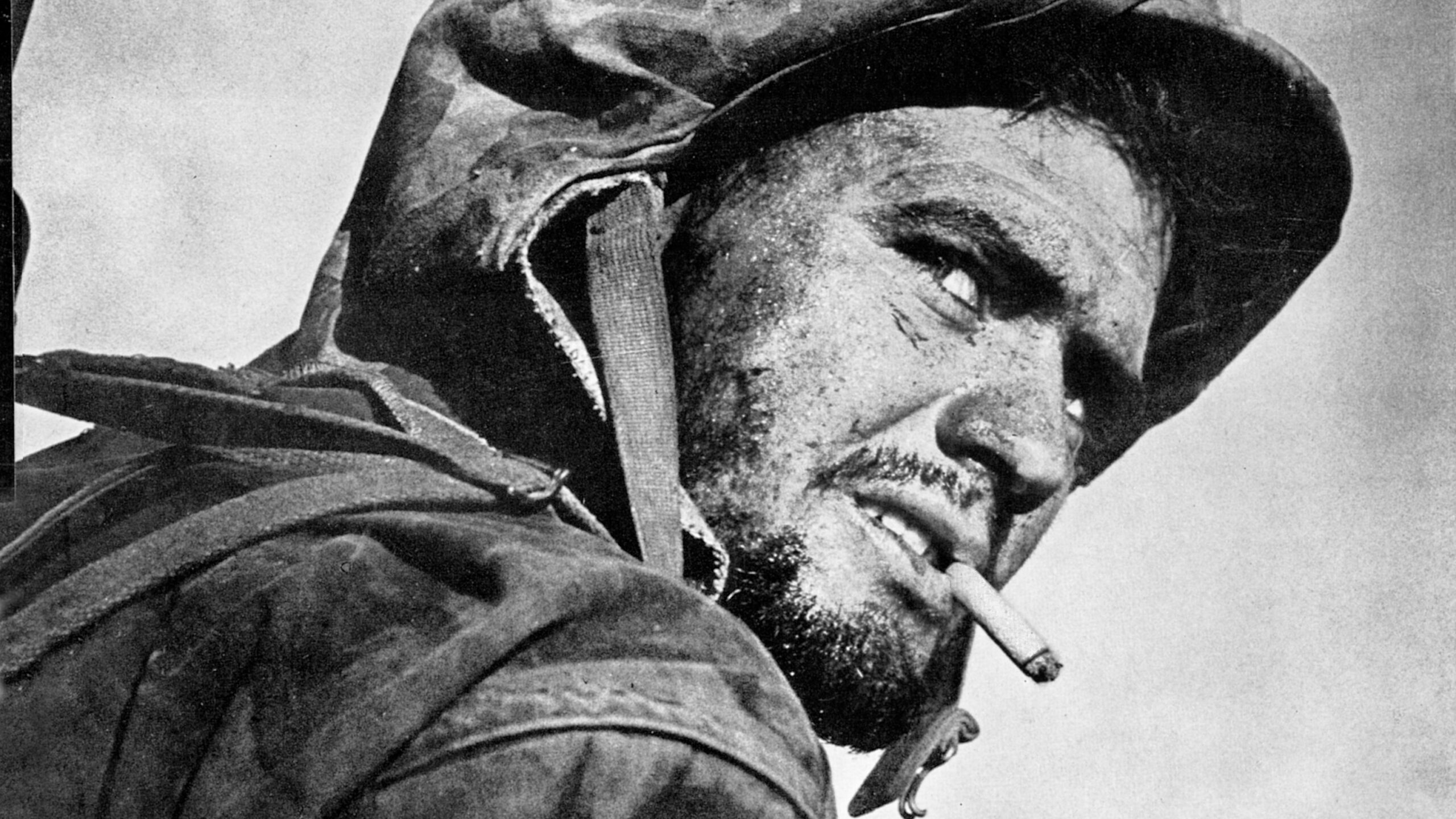
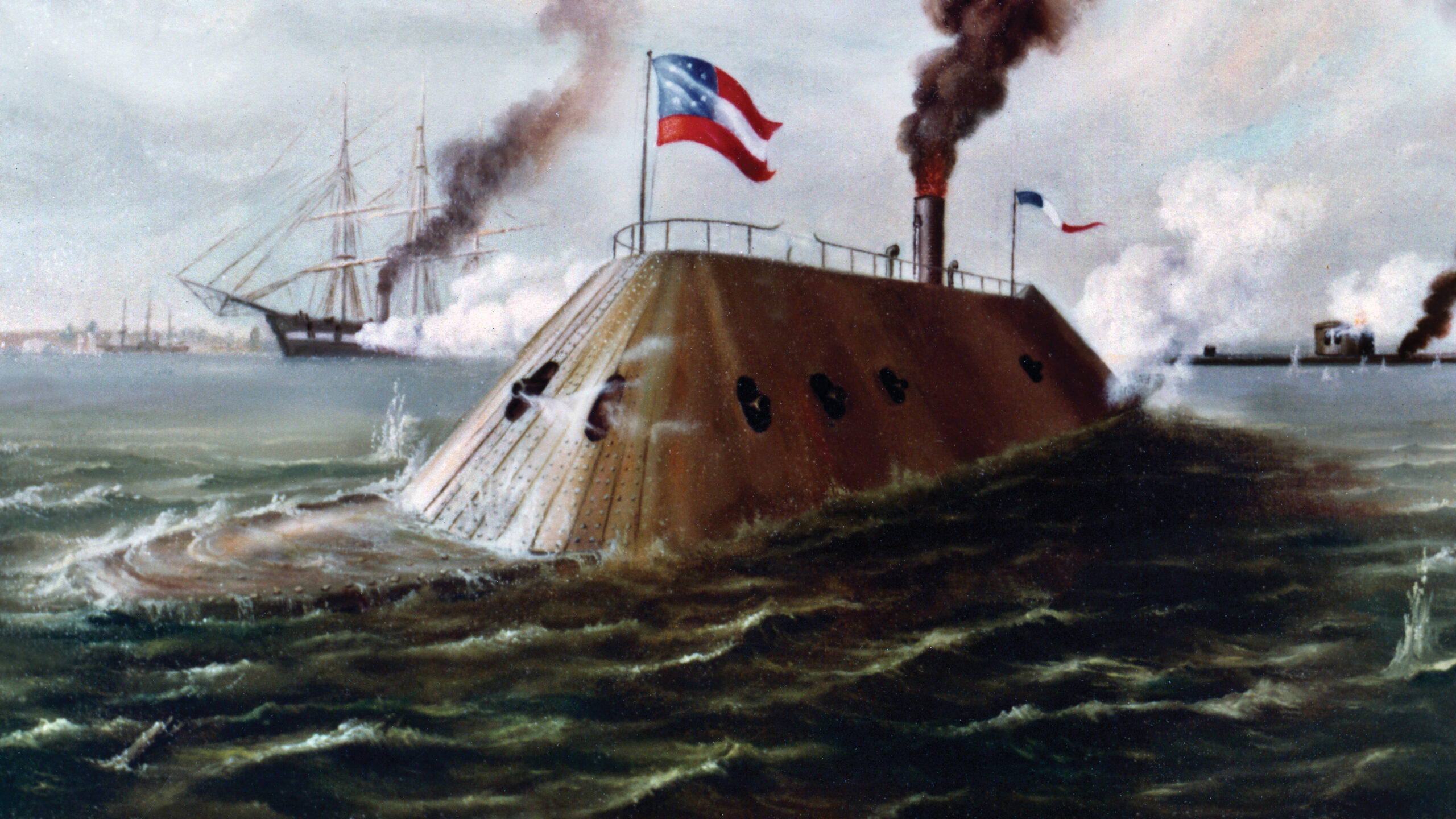
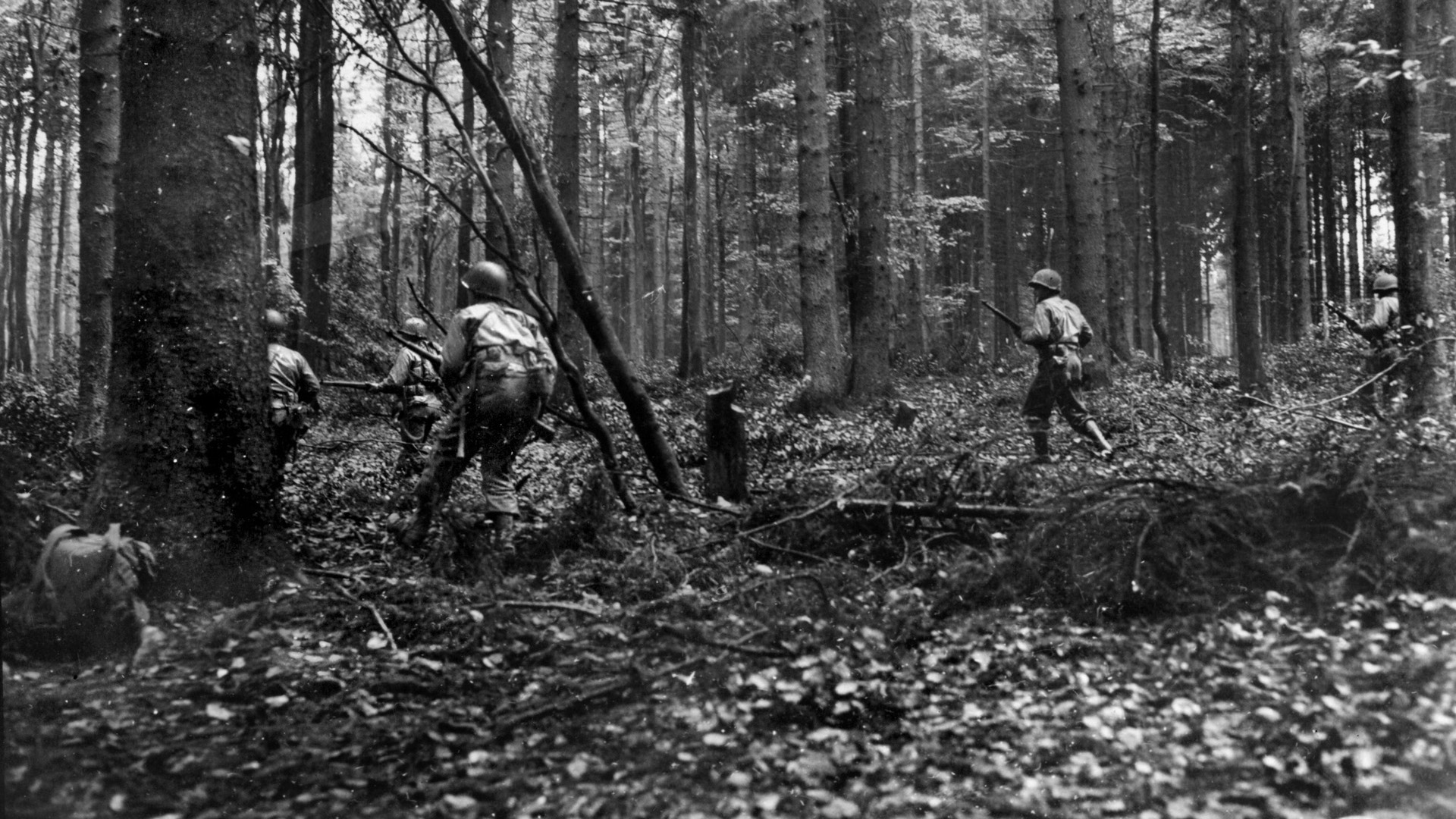
Join The Conversation
Comments
View All Comments